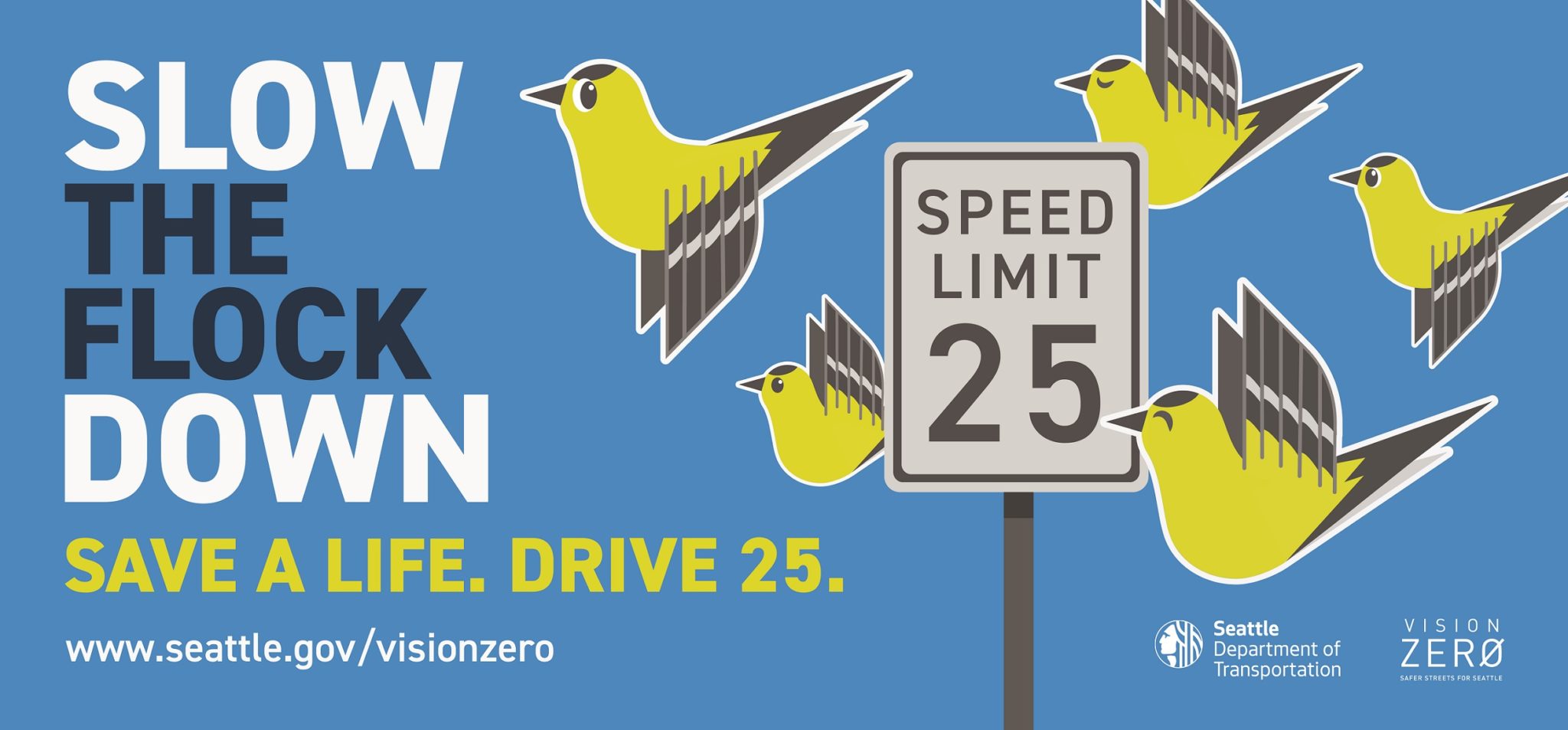 Drivers, please help Slow the Flock Down! Graphic: SDOT.
Drivers, please help Slow the Flock Down! Graphic: SDOT. We’re here to say something: it’s time to Slow the Flock Down! We’re all members of the larger flock when we travel, and we want everyone to drive slowly and safely so we can all get home to our nests at the end of each day, period.
We, in partnership with the Portland Bureau of Transportation (PBOT), are launching a joint public safety campaign urging drivers to “Slow the Flock Down!” The attention-grabbing public education campaign is designed to raise awareness that speed limits have been lowered to 25 miles per hour on most Seattle arterial streets, part of the City of Seattle’s larger Vision Zero strategy to end traffic deaths and serious injuries by 2030. In addition to public education efforts, both cities continue to design, build, and implement safety improvements, with a key focus on areas where data shows the most serious crashes occur.
The campaign is being launched as both cities respond to the deeply concerning local and national trends of increasing traffic deaths and serious injuries. Unlike the typical language and tone of public service announcements, this campaign uses humor to grab people’s attention with the hope of saving lives.
Editor’s note (July 11, 2022): you can visit these links to view the Portland Bureau of Transportation’s press release and web page about the campaign.
The message is intended for all drivers, especially young males. According to the U.S. Department of Transportation’s Fatality Analysis Reporting System, 72 percent of national traffic deaths in 2020 were males and 16 to 29 year-old males had the highest traffic fatality rate of any demographic group. We conducted an online survey to test potential messages and found that a wide range of participants considered this campaign language to be the most memorable and effective option, including the focus demographic of younger men.
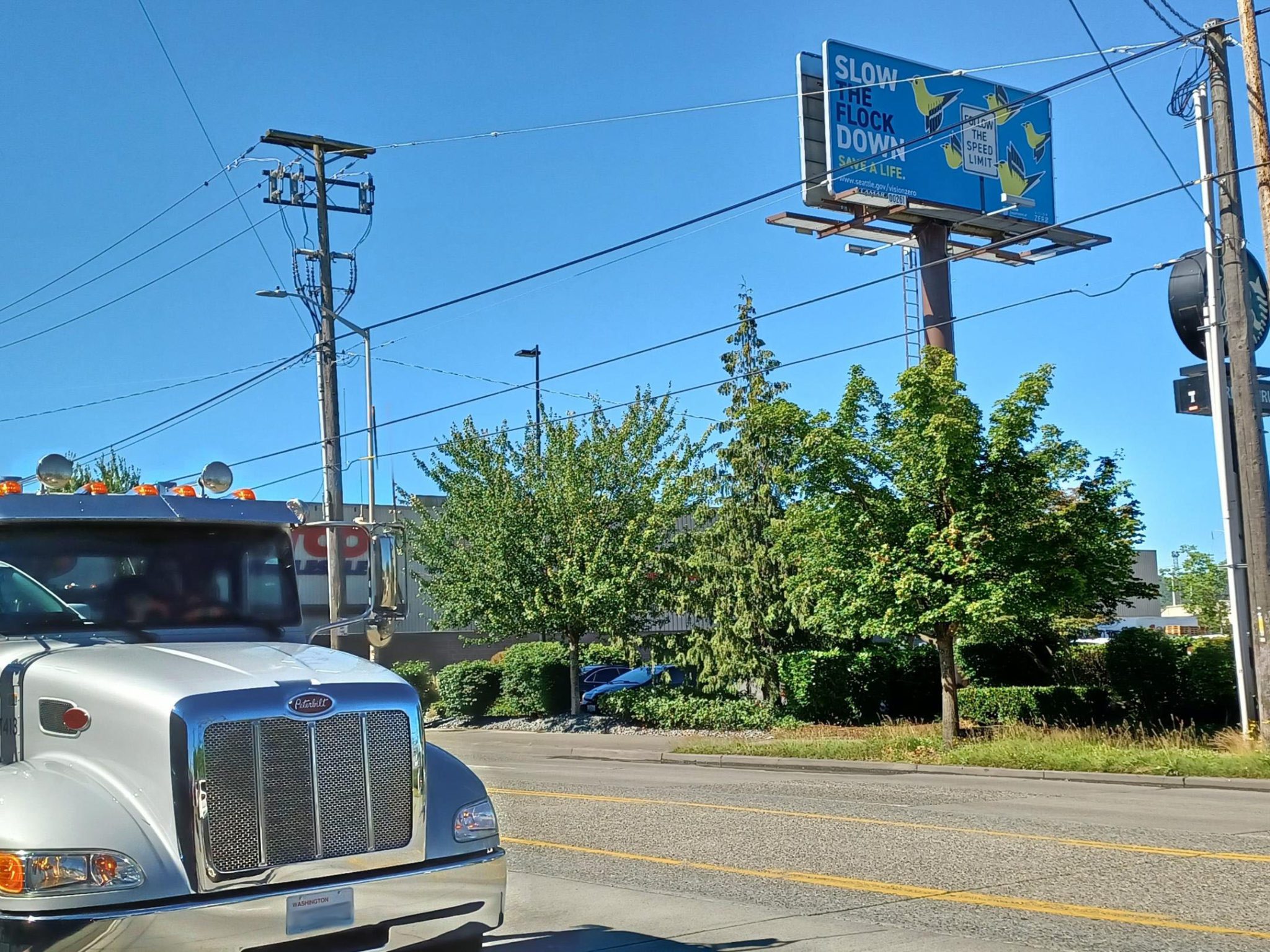
All bird puns and near expletives aside, speeding is no joke. Just the opposite. Speed is the number one factor in the frequency and severity of crashes. How fast you’re driving influences your field of vision, how quickly you can react, and the amount of time it’ll take for you to come to a complete stop. The faster you go, the more damage you can do – both to yourself and to those around you – particularly people who are walking, rolling, or biking, and not protected by the shell of a vehicle.
While driving slower may seem like an inconvenience, when you do the math most trips only take 20-40 seconds longer to drive a mile at 25 MPH than at less safe speeds. If adding a couple minutes to your trip means avoiding a crash resulting in serious injury or death, it couldn’t be more worthwhile. We appreciate drivers giving a hoot and making a collective commitment to safety.
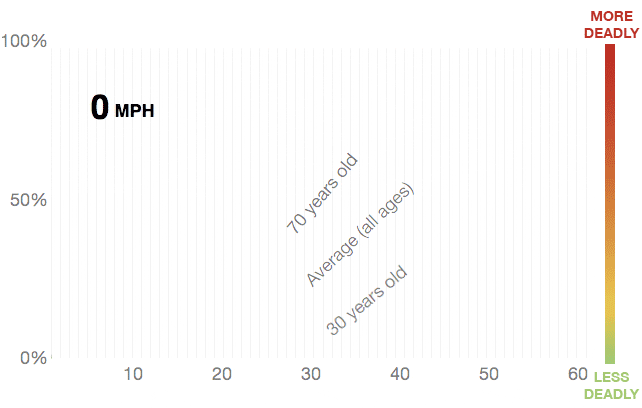
With traffic fatalities trending in the wrong direction, we’ve got to be bold in how we talk about this issue and what we do about it. Lowering speed limits and redesigning streets to support slower vehicle speeds is central to advancing our Vision Zero plan to end traffic deaths and serious injuries on city streets by 2030. Over the past couple of years, we installed thousands of new 25 MPH speed limit signs across the city. Now, more than 90% of city of Seattle arterial streets are signed at 25 MPH, with larger signs at more frequent intervals. This is a major milestone in our speed reduction work. And it’s just the beginning.
Our Slow the Flock Down campaign aims to complement these efforts and build awareness about why the 25 MPH speed limit is important. You’ll see billboards, advertisements on the side and back of buses, and social media ads. Radio spots are coming too. Yard signs will be available at customer service centers and select community centers, where our existing suite of Vision Zero yard signs are also available. We want to get people’s attention and highlight the significance of slowing down. Driving 25 MPH can mean the difference between life and death, especially if you were to hit a person walking or rolling. People outside of vehicles are much more vulnerable to harm, and this increases significantly depending on the speed, size, and weight of a vehicle.
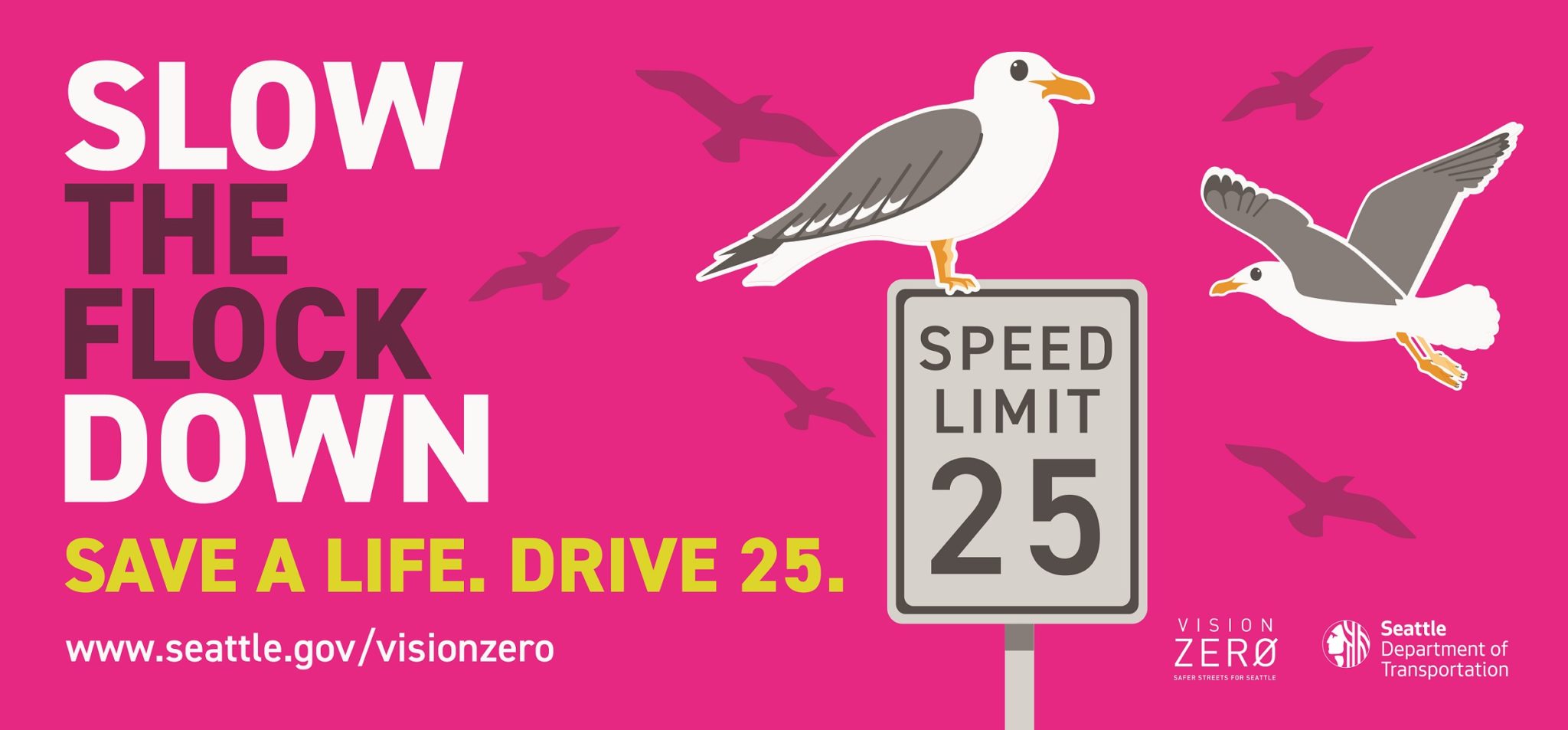
Let’s be clear, speed limit signs and this catchy campaign are not the end of our safety and speed reduction efforts. We’re continuing to put in place effective traffic calming treatments like speed cushions and street redesigns (including reducing the number of travel lanes, narrowing travel lanes, and shortening pedestrian crossing distances), so more of our streets are designed for the safety of people, not the fast flow of traffic. These are tried and true tools that enhance safety for everyone.
In addition to this safety campaign, we continue to redesign and rebuild Seattle streets with safety in mind and a focus on prioritizing investments in areas of highest need based on traffic safety data. For example:
- We are continuing to make ongoing safety investments along Rainier Ave S, building on safety improvements made over the past several years. This past weekend, we began painting new bus-only lanes on Rainier Ave S and plans to continue making additional safety and access improvements in the near future, including repairing sidewalks, improving crosswalks, and upgrading traffic signals to improve pedestrian safety. The City of Seattle will also install a new traffic safety camera to enforce the speed limit on Rainier Ave S near South Shore PK-8 School.
- We have recently begun planning and community outreach for major safety improvements on Aurora Ave N. This safety study will help determine the course for future safety improvements, including $50 million in future safety investments recently allocated by the Washington State Legislature.
- We continually build safety improvements as a part of our daily work and every major paving project. For example, we have recently completed major projects which improved safety on 12th Ave S, Delridge Way SW, and 15th Ave NE (completed last week). We are currently working on Complete Streets projects on E Madison St, 23rd Ave E, Sand Point Way NE, Lake City Way, and Martin Luther King Jr Way S.
- Over the past several years, we have upgraded nearly half of Seattle’s traffic signals to include pedestrian-first crossings which give people walking a head start to cross the street. We’ve seen a 50% reduction in pedestrian collisions at these intersections, and a third fewer serious injuries. We are also continuously working on other crossing improvements, like adjusting traffic signals to give people more time to cross the street and repainting 1,500 crosswalks this year.
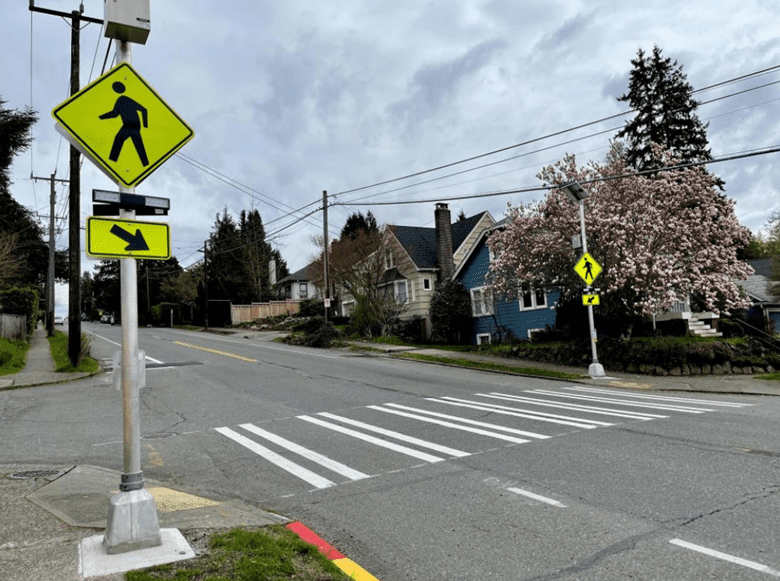
In addition to kicking off the Slow the Flock Down public safety campaign in Seattle, we’re excited to be teaming up with our colleagues across the Columbia River at the Portland Bureau of Transportation (PBOT) to amplify this message across the Pacific Northwest. Our neighbors to the south will be rolling out a similar campaign this summer. Fun fact, we learned that Oregon and Washington have similar-ish looking state birds, the Western meadowlark and American goldfinch, respectively (birders, note the emphasis on ish). We may be competitors in other spaces, but when it comes to transportation safety, we’re all in this together.
We’re thrilled to partner with PBOT in this work as both of our cities share a Vision Zero goal to end traffic deaths and serious injuries. And yes, we are fully embracing that we put a bird on it.
We’re able to do this work thanks to a grant from the Washington Traffic Safety Commission. This speed limit campaign is the first of a two-part education effort supported by the grant. We’ve also been collecting data at several locations across the city to measure how consistently drivers stop at unmarked intersections to help inform the next phase, focused on highlighting the state law that (nearly) all intersections are legal crossings, regardless of if there’s a marked crossing. This is important because failing to yield to pedestrians is also a top contributing factor to serious and fatal crashes. We’ll be sharing more about this aspect of the campaign in the coming months.
In the meantime, we hope you’ll do your part and please slow down, for flock’s sake. Thank you.

Quotes:
“Whether going to work, traveling to see loved ones, or enjoying public spaces, we all have the right to feel safe moving around our city. As we plan a One Seattle transportation future, we must envision streets prioritizing people over speed. That means leading by advancing urgently needed Vision Zero improvements and working to prevent death and serious injury on Seattle streets. Safer streets are a vital part of public safety – and slowing down when driving is something we can all do to make our community safer for everyone.”
– Seattle Mayor Bruce Harrell
“We continue to modify our transportation system to help people move more safely around Seattle, including recent improvements such as lowering speed limits and modifying traffic signals to give people walking and rolling a few seconds head start at intersections. We also know that safety is a shared responsibility. As we focus on street design changes, education tools like these new billboards remind people driving that slowing down to safer speeds is one critical role they can play to support Seattle’s Vision Zero goal. With traffic fatalities trending in the wrong direction, we’ve got to talk boldly about this issue, and I want to thank the Washington Traffic Safety Commission for their support of this work.”
– Kristen Simpson, Seattle Department of Transportation Interim Director
“There is still much work to do, but we have made real progress in addressing the safety issues and updating speed limits on our high crash corridors. As we continue to invest in street improvements for safety, we ask everyone to do their part by driving the speed limit and watching out for others.”
– Chris Warner, Portland Bureau of Transportation Director
“South End streets were built for the ease and speed of vehicles, not for the safety of our kids, elders, communities with vision impairments, or anyone who cannot drive for health or economic reasons. Driver education is important, yes. But it’s also important to acknowledge the task of designing our streets to facilitate safer driving, which will more concretely bring us closer to our Vision Zero goal. I am hopeful that this SDOT public safety campaign will be the start of a broader conversation leading to urgent safety investments needed in Southeast Seattle.”
– Seattle City Councilmember Tammy J. Morales
“Safety must be the priority for everyone using Seattle’s roads and, unfortunately, the first part of 2022 continues the disturbing national trend of unacceptably high numbers of traffic-related injuries and deaths, especially among pedestrians and people experiencing homelessness in South Seattle. While we have lowered speed limits, expanded access to mass transit, and increased crosswalks; we must continue to increase our investments in South Seattle and other underinvested areas, so that our transportation infrastructure is quickly made safer.”
– Seattle City Councilmember Alex Pedersen